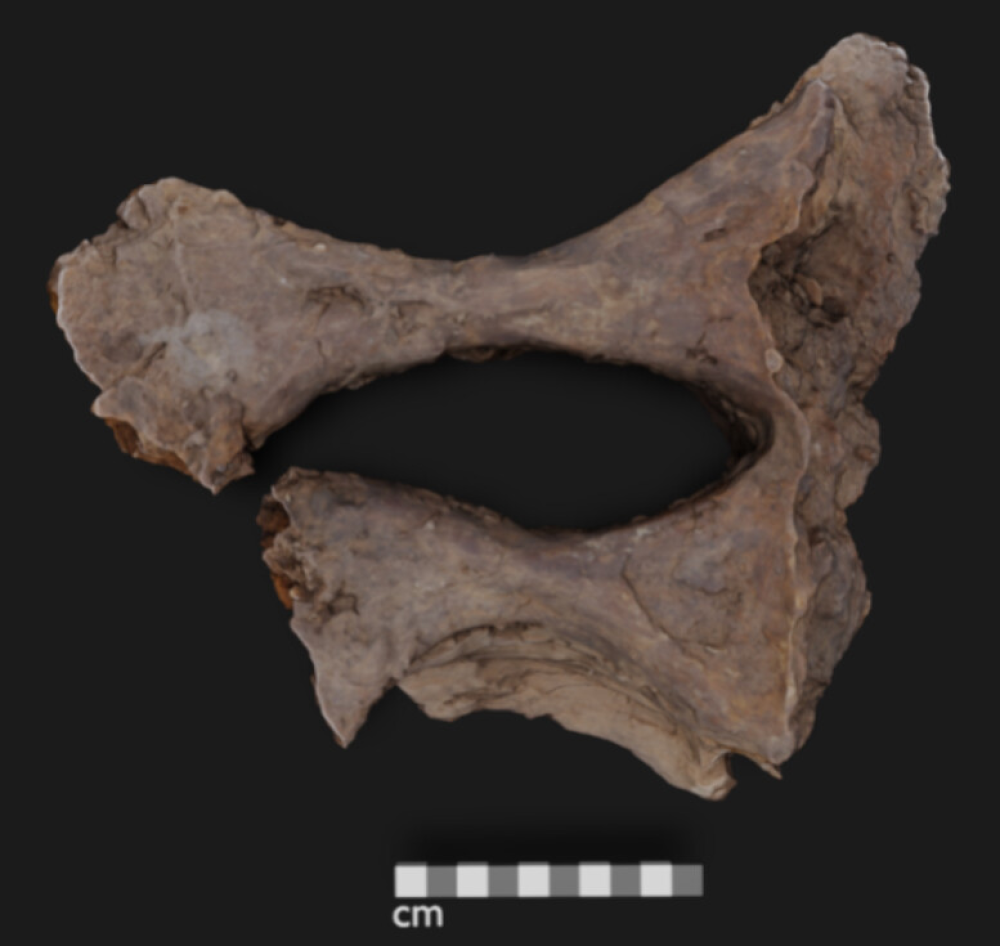Can you get organic compounds in a fossilized bone? There was a time we thought not, but a new study that used a novel combination of techniques has provided the best evidence yet for collagen within dinosaur remains. So, the question becomes, what else could we find?
ADVERTISEMENT GO AD FREE
“This research shows beyond doubt that organic biomolecules, such as proteins like collagen, appear to be present in some fossils,” said Professor Steve Taylor, chair of the Mass Spectrometry Research Group at the University of Liverpool’s Department of Electrical Engineering & Electronics, in a statement.
In what’s being described as a “groundbreaking” achievement by the University of Liverpool, a team of scientists used protein sequencing and mass spectrometry among other techniques to study a hefty sacrum bone weighing around 22 kilograms (49 pounds) that would’ve sat in the pelvic area of duck-billed Edmontosaurus dinosaurs.
The fossil was retrieved from the Upper Cretaceous zone of the Hell Creek Formation in Harding County, South Dakota, and dates back around 66 million years. A crucial step in the novel methodology used to study it was tandem mass spectrometry that could detect and quantify hydroxyproline, an amino acid that’s specific to collagen when found in bone. It marked the first time such a technique has been used to search for the protein in dinosaur bones.

The Edmontosaurus sacrum.
“Our results have far-reaching implications,” added Taylor. “Firstly, it refutes the hypothesis that any organics found in fossils must result from contamination.”
“Secondly, it suggests that cross-polarized light microscopy images of fossil bones, collected for a century, should be revisited. These images may reveal intact patches of bone collagen, potentially offering a ready-made trove of fossil candidates for further protein analysis. This could unlock new insights into dinosaurs– for example revealing connections between dinosaur species that remain unknown.”
“Lastly, the findings inform the intriguing mystery of how these proteins have managed to persist in fossils for so long.”
ADVERTISEMENT GO AD FREE
It’s not the first time that collagen has been found in a dinosaur bone. The protein has also been identified in another hadrosaur, a T. rex, and a Lufengosaurus with collagen that had been preserved for 195 million years. The researchers note that the Edmontosaurus sample shows identical collagen peptide sequences to those identified in the hadrosaurs and T. rex.
Armed with the strongest evidence yet that dinosaur proteins can endure to modern day, this hunk of sacrum has a lot to teach us about the biomolecular decay that occurs during fossilization. Excitingly, it raises questions about what else we could extract from ancient fossils, opening up new avenues for investigation.
And we know what you’re thinking – does that mean we can have Jurassic Park?
ADVERTISEMENT GO AD FREE
The study is published in Analytical Chemistry.
Source Link: “Exceptionally Well-Preserved" 66-Million-Year-Old Edmontosaurus Reveals Collagen In Dinosaur Bone